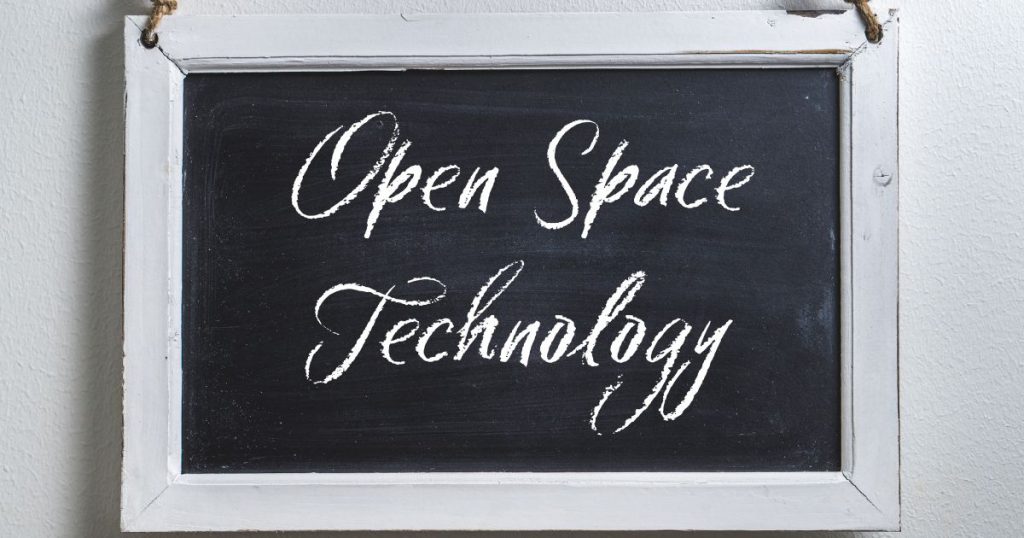Unlock the full potential of your workshops and meetings with these engaging participative evaluation methods – where every voice is heard and every participant plays a role in shaping the evaluation process.
Have you ever left a workshop or meeting feeling unsatisfied and like your voice wasn’t heard?
It’s a common feeling, and often times it’s because traditional evaluation methods are one-sided and don’t allow for active participant involvement.
But what if I told you there’s a way to change that? Enter participatory evaluation methods!
These methods put the power back in the hands of the participants, allowing everyone to have a say in the evaluation process. It’s like turning the typical evaluation process on its head and giving everyone a chance to contribute and reflect on the workshop or meeting experience.
Think about it, who knows the workshop or meeting better than the people who actually participated in it?
By incorporating their thoughts and insights, we can gather a more well-rounded and accurate evaluation of the experience.
So, let’s get ready to shake things up and explore the world of participatory evaluation methods!
Contents
1. Evaluation Valerie
Evaluation Valerie is an interactive and visual evaluation tool that’s great for gathering feedback about a service, event or session.
Method
Here is Valerie – you can draw or design your own version of her:

Valerie has:
- A big heart – this is for writing down something that you loved or really enjoyed
- A handbag – this is for writing something that you’ll take away with you to use in the future, or something that you learned
- A trash can – this for something that you did not like or find helpful
- A magic wand – Valerie has a magic wand that can make one change!
- A thought bubble – something that you will remember
Ask participants to spend a few minutes writing down their thoughts on a post-it note, then stick them on Valerie in the relevant place.
These can then be collected and collated after the event/workshop to inform and improve future sessions or services.
Outcome
Gain a more in-depth idea of people’s thoughts and feelings about a session or service. This qualitative data can help you improve your future work and hold more engaging sessions in the future.
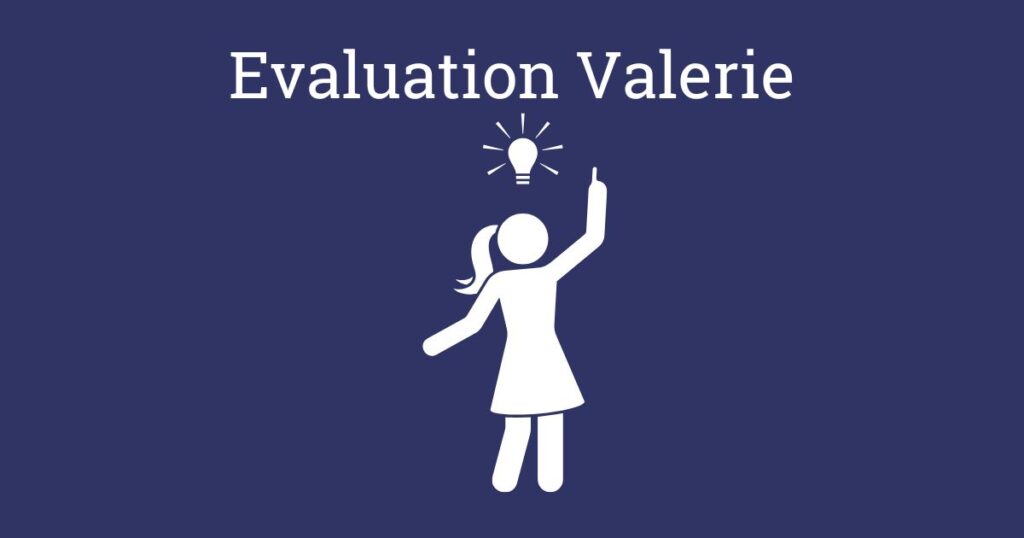
Details
2. Evaluation Thermometer
The Evaluation Thermometer an extremely simple and easy ‘stick and go’ evaluation tool to use at in-person events, meetings and workshops. It can help you gage whether your participants are ‘hot’ or ‘cold’ about the content of your session or event.
Method
Ask participants to stick a sticker onto a pre-printed thermometer to rank their opinion on something or to evaluate an event or session.
Pre-print some large thermometer images onto blank paper. Add labels and a rating scale to the target if you wish.
Give each participant a sticker at the end of a session, event or workshop and ask them to place it onto the thermometer in a place that represents how they feel.
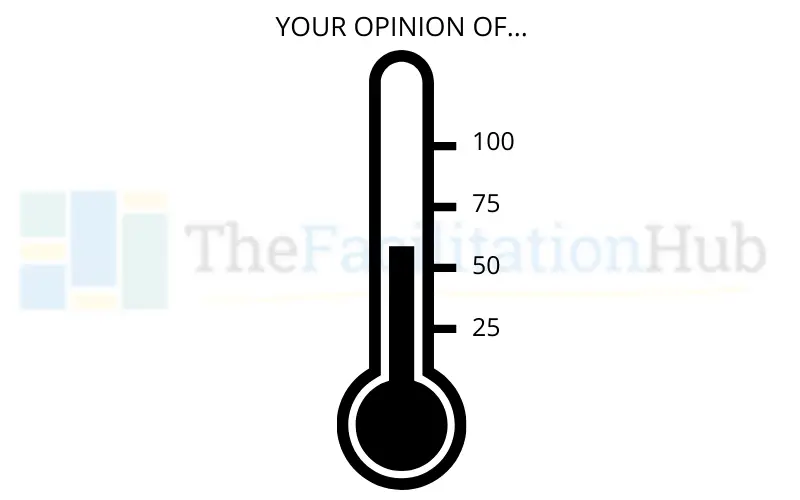
Outcome
Gain a quick snapshot/poll of people’s opinion while they were ‘in the moment’. This is better to get a snapshot view immediately, rather than sending out a survey, because in takes a few seconds to participate and it captures how people felt at the time, rather than on reflection.
Details
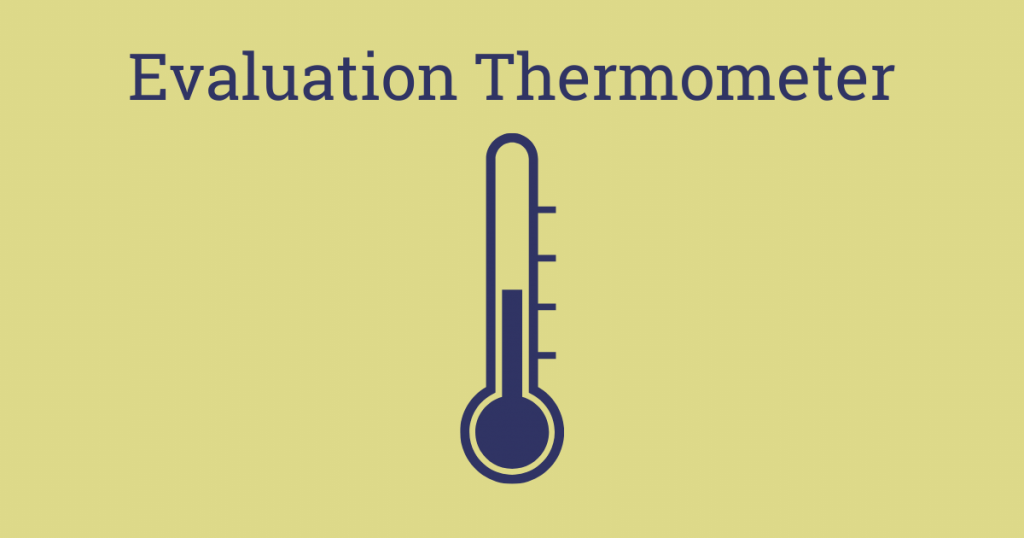
3. Evaluation Target
This a quick and easy ‘stick and go’ evaluation tool to use at in-person events, meetings and workshops.
Ask participants to stick a sticker onto a pre-printed target to rank their opinion on something or to evaluate an event or session.
Method
- Pre-print some large target images onto blank paper. Add labels to the target if you wish.
- Give each participant a sticker at the end of a session, event or workshop and ask them to place it on the target in a place that represents how they feel.
Outcome
Gain a quick snapshot/poll of people’s opinion while they were ‘in the moment’. This is better to get a snapshot view immediately, rather than sending out a survey, because in takes a few seconds to participate and it captures how people felt at the time, rather than on reflection.

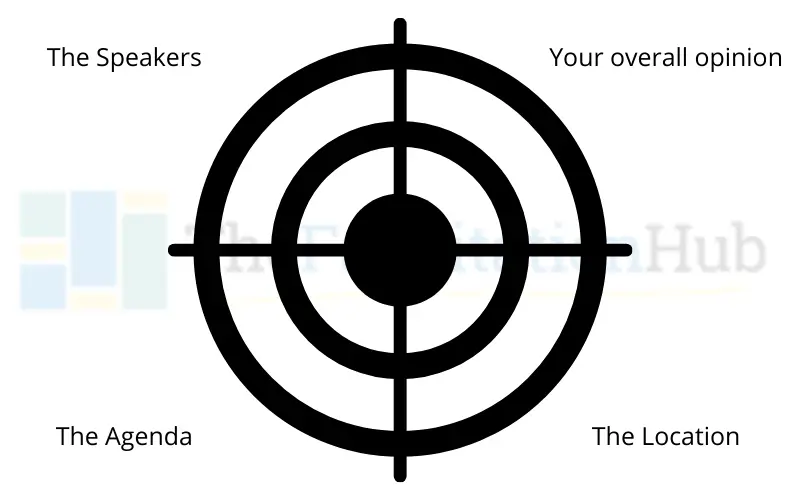
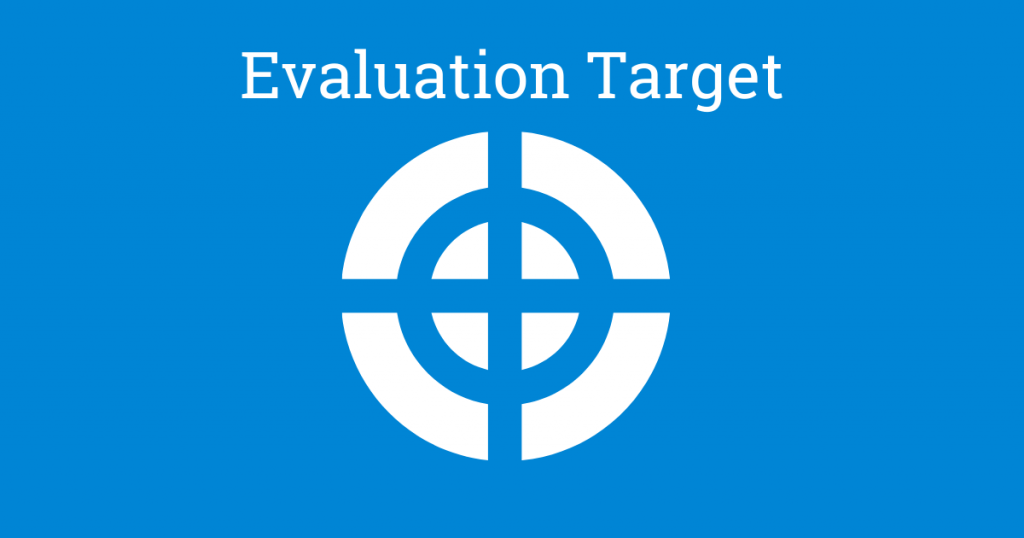
Details
How To Use Participative Evaluation Methods
Any of these participatory evaluation methods can be used in a variety of ways, but here are some steps to help you get started to help ensure that these methods are used meaningfully and not in a tokenistic way:
Define the purpose: Start by clarifying why you’re conducting the evaluation and what you hope to achieve.
Involve participants: Encourage active participation from all participants in the evaluation process.
Choose appropriate participative evaluation methods: There are many different participatory evaluation methods to choose from, including: surveys, focus groups, interviews, observation, and storytelling. .
Gather data: Use the chosen methods to gather data from participants. Be sure to keep the process open, inclusive, and respectful of all participants.
Analyze and interpret data: Review the data you’ve collected and analyze it to identify patterns, trends, and insights. This will help you determine the strengths and weaknesses of the workshop or meeting, and where improvements can be made.
Share findings and plan for action: Share the results of the evaluation with all participants and use the information gathered to plan for future actions and improvements. Encourage everyone to be a part of the solution and take ownership of the changes they would like to see.
Evaluate and refine the process: Continuously evaluate and refine the participatory evaluation process to ensure that it remains effective, inclusive, and relevant.
Final Thoughts on Participative Evaluation Methods
In conclusion, participatory evaluation methods are a game changer when it comes to evaluating workshops and meetings.
By involving all participants in the evaluation process, you not only gather a more accurate and well-rounded assessment of the experience, but you also give everyone a voice and a chance to contribute.
Think about it, who better to assess the workshop or meeting than the people who actually participated in it? These methods break away from the traditional, one-sided evaluations and allow for a more collaborative and empowering experience.
So, next time you’re feeling like your voice wasn’t heard or you’re unsatisfied with a workshop or meeting evaluation, remember that there’s a better way. Embrace the power of participatory evaluation methods and see the difference it can make!
In summary, participatory evaluation methods provide a more collaborative, empowering and accurate evaluation process for workshops and meetings. These methods involve all participants and result in a more well-rounded assessment of the experience.
So, give it a try and see the positive impact it can have on your evaluations!


